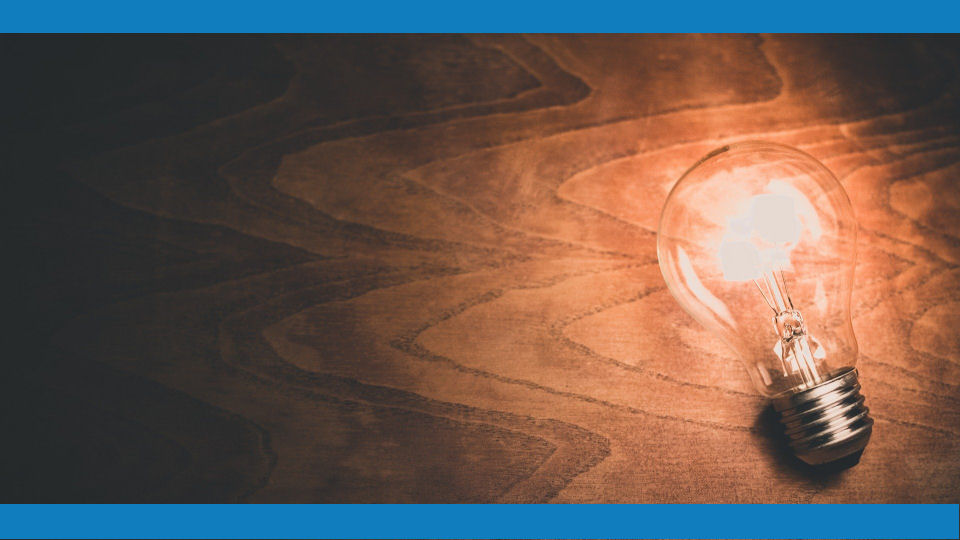Lighting typically accounts for 10 to 30% of the total energy consumption cost for many building types. Due to its large impact on AC systems, and because it is a very visible energy consumer, lighting savings are often a good opportunity to target first.
Follow the checklist ideas below to help reduce energy consumption and achieve the ‘Win Win’:
This checklist gives a detailed list of lighting saving opportunities that can be used in many types of buildings. Daylight, electric lighting, and lighting controls are just some of the topics included.
The 25 opportunities are divided up across the Big Green Challenge 5-R categories: Review, Reduce, Reuse, Recycle, Rethink. These are aligned with the good practice order of measures, first focusing on measures that are not only low cost, but also right size subsequent investments in new lighting technology. Look for this symbol ($$$) to get an idea of the level of investment that may be required.
REVIEW
The first step to take to have an understanding of lighting performance and target savings right away
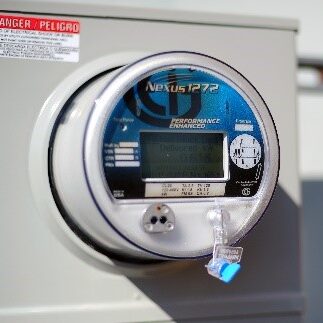
1. Install meters and sub-meters ($)
- It’s difficult to manage what can’t be measured. Use sub-meters to review lighting consumption and identify saving opportunities, either across zones or in sample areas.
- Then, use metered consumption data to compare lighting performance with occupancy levels and/or lighting industry benchmarks.
- For example, lighting consumption can be measured in kWh of consumption per m2 per year, or by using the Lighting Energy Numerical Indicator – LENI.
- Understand what you are consuming and when, and whether this adds value to building occupants or not.
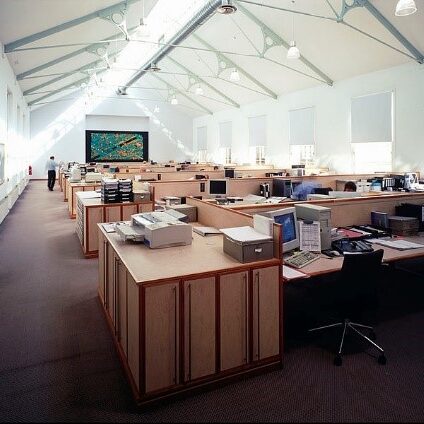
2. Reconsider lighting levels both inside and outside
- Different tasks and different people require different light intensity. Consider types of work carried out and who is involved. Different age groups also often have different lighting requirements.
- Most lighting designs are based on assumptions about building occupants, and are often set up for lighting levels to meet worse case scenarios. Therefore, it’s very possible many spaces are being over-illuminated.
- Ask for occupants' feedback and try different levels of lighting intensity to test comfort, health & safety, and productivity levels. Take lighting level measurements in sample areas, taken at the appropriate working level; lighting levels are usually measured in ‘lux.’
- Don’t be afraid to take out or dim down lights if you can – you can always turn them back on! Involve local management and facilities teams.
- Try to consolidate working, and switch off zones no longer needed, if possible.
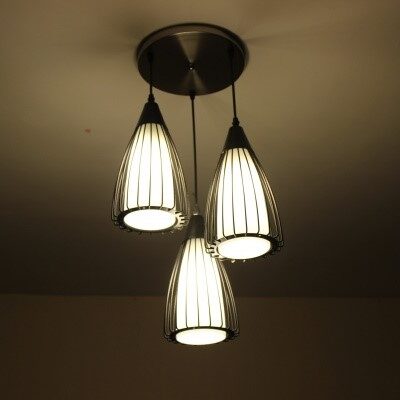
3. Review light-output ratios
- Light-output ratio is a measure of how much light gets lost inside a light fitting luminaire, thus not illuminating the task.
- Research whether light fittings are efficient in the way they emit light.
- Many older fittings can be very inefficient. Consider measures to reduce losses.
- Otherwise, replace luminaires or use retrofit reflectors improve overall light output performance.

4. Comply with national lighting standards and regulations
- New national and international policies & standards are being frequently developed to keep up with new technologies and requirements.
- Compare your lighting level measurements against recognized standards.
- Check to ensure you are complying with any national legal requirements for lighting systems and performance; for example, these may be associated with use of display screen equipment.
- Check with lighting specialists to see if there is anything that needs to, or could be done that isn’t being done at the moment.

5. Review lamp types and overall lighting performance
- When reviewing overall lighting performance, also consider lamp types employed, color quality and temperature, and lamp age.
- Many lamps become less efficient over time, degrading light output below effective levels. Verify if existing lamps are still delivering sufficient lighting levels.
- The lifetime of LED lighting is often measured in terms of its L70 rating: this is time it takes until light output reaches 70% of the initial output levels.
REDUCE
Target improvement measures that directly decrease lighting energy consumption first
1. Use natural daylight
- One of the best ways to make significant savings is to use daylight as the primary source for interior illumination; people love working in day-lit rooms too.
- Switch off or dim down lights when natural light levels are sufficient to meet demand.
- Avoid having blinds down when not needed. Daylight blinds can enable natural light to enter the room without the discomfort of glare. Similarly, light tubes can be used to bring in more natural light from above.
- Make sure windows and skylights are regularly cleaned.
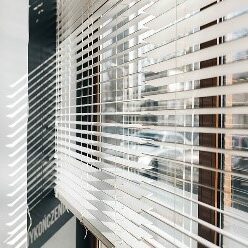
2. Train the team
- Training is a key to achieving sustained energy performance for lighting.
- Consider running training sessions and awareness campaigns so everyone understands the importance of switching lights off, or turning them down, and the impacts of lighting performance on the environment, on operating costs and on people’s emotive wellbeing.
- Locked-in savings can be achieved if everyone understands the impacts of their actions and collaborate to eliminate avoidable energy waste.

3. Introduce a switch-off policy
- Aim to galvanize colleagues’ hearts and minds for better energy performance by involving colleagues in controlling lighting use.
- Define what is expected to be normal practice to make it a habit to switch off lights before leaving the room. Be prepared to bust any potential myths around switching lights on and off.
- Co-create new policies by ensuring everyone understands the key issues and buys-into new practices; collaboration is the key to effective policy making.
- Switching off lighting aso reduces any air-conditioning loads, helping to keep colleagues cooler in hot environments.

4. Appoint a switch-off champion
- Give someone daily responsibility to coordinate local efforts for better lighting and ensure that only lights needed are left on at the end of the day or shift.
- Engage colleagues on a more of a personal level, in discussing what lights are needed and when and whether they are new ways of operating which requires less lighting.

5. Use deliberately placed task lighting
- We often don't need most of the ambient 'general' lighting we always keep on. This is because the strategy is to fully illuminate the general area all the time regardless of where the lighting is needed. This can be very wasteful.
- A simple table lamp can easily substitute a large proportion of ambient lighting by focusing only on the current task.
- Using more task lighting can also reduce eyestrain and energy costs by switching off or dimming down the general lighting.
- Talk to colleagues about what can be done.
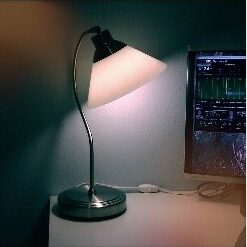
REUSE
Once loads have been reduced, then prioritize routine and maintenance improvement practices (that don’t require significant investment)
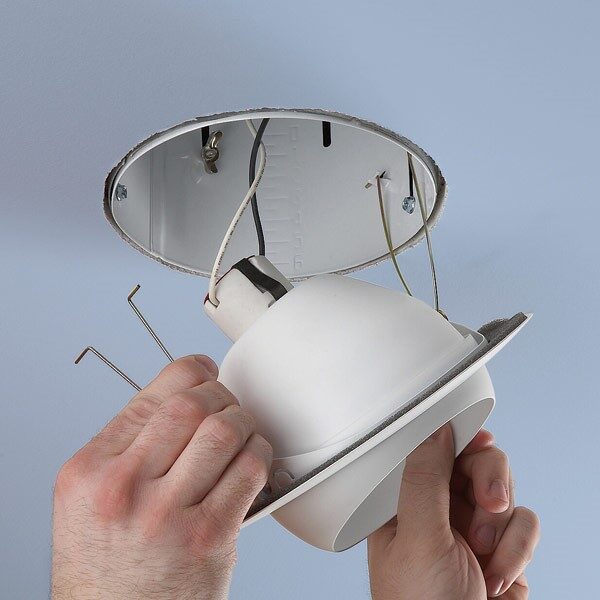
1. Carry out regular lighting maintenance
- Over time, poor lighting maintenance can result in lighting efficiency levels reducing by 30% in a matter of a few years.
- Carrying out simple and periodic cleaning of lamps/reflectors/shades/ etc., and targeting other light loss factors, can help maintain optimum lighting performance.
- Introducing better practices often reduces energy consumption by up to 15%, as well as improving the appearance of the space.
- Talk to facility operators about the importance of good maintenance practices.

2. Ensure switches are clearly labelled and accessible
- Make it easy for everyone to use switches (and dimmers as appropriate) for everyday use. Sufficient switches allow people to easily switch off lights when they leave, even if it’s for a short break.
- Local dimmers can also be helpful as they give people more freedom.
- Empower people to use controls after sharing with them the importance of overall improved lighting performance.
- Furthermore, lay out multi-switch panels logically and label them to avoid people getting irritated over not finding the switch they need!
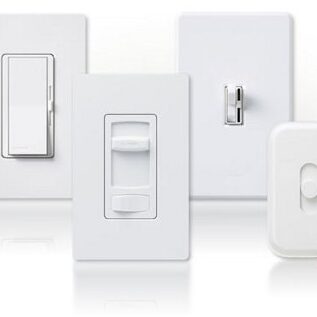
3. Retrofit simple lighting control options ($)
- Simple inexpensive lighting controls can be retrofitted through maintenance activities, to provide significant energy savings.
- Explore appropriate options for standard applications: additional on/off switches, dimming, scene control, photocell switching or dimming, presence detection occupancy controls, and timer controls are just some of the simple options available that provide flexible control over lighting to reduce consumption.
- Bring together users with maintenance operators to discover what can be done.
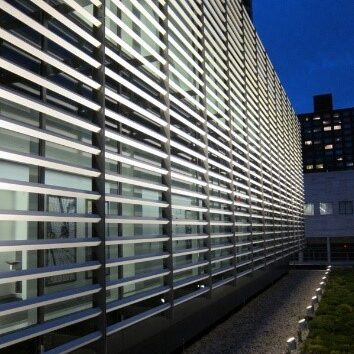
4. Adjust night-time lighting levels
- Many organizations tend to leave lights on during the night, to enable cleaners to do their job, or to keep out the burglars. However, this comes at a high cost.
- A common mistake is to ignore existing lighting controls and not take advantage of them. Activating presence sensors for example – and optimizing the time settings and dimming controls – can still allow cleaners to work but at lower cost, turning lights on only when required.
- Involve the cleaning teams to think about the way they work to help optimize the processes for maximum savings.
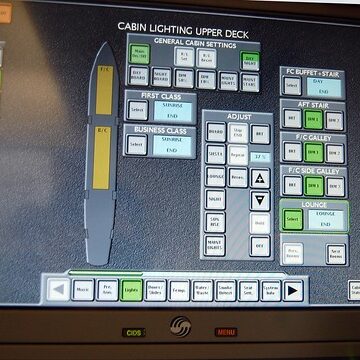
5. Bring back existing lighting controls
- We find that many work spaces already include lighting controls, but many are not being effectively used (as per the original design intent) This may be because their setups are too complex, or they are too costly to maintain or optimize as specialists are required.
- Many systems can fail once certain people move one or because their computer control modules gets full with maintenance alarms and so ceases to function.
- The good news is that the technology has already been paid for. Consider engaging specialists or use training to build up your own skills to review and recommission the lighting control system to be more user friendly, to facilitate continual performance improvement in the simplest way possible.
- This should involve collaboration with building users and operators to ensure the system works effectively.
RECYCLE
Talk to colleagues, share experiences, and try out proven lighting approaches and technologies used by others
1. Survey building users
- Ask fo building user feedback about their working environment to better understand their lighting needs and how much they like the current lighting systems. After all, lighting exists to enable users to carry out their tasks in maximum safety and efficiency. Only they know what works best for them.
- Building user feedback can be collected using a variety of tools including observation, in depth interviews, casual chats, focus groups and/or questionnaires.
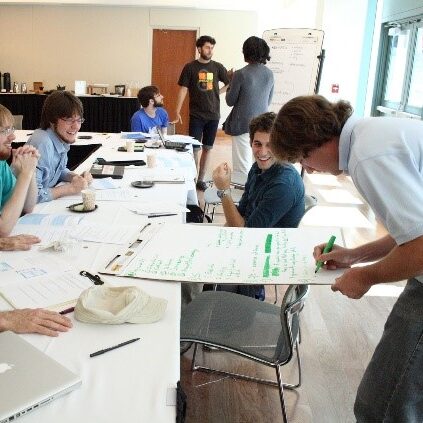
2. Speak to lighting specialists
- Maintenance operators, lighting suppliers, consultants and other people in the field can be useful to engage to learn about new ideas and opportunities.
- Connecting different perspectives is often very useful to understand what can be done to identify and address saving opportunities.
- A lighting workshop or audit may add value to the process: What are we doing well? Are there any ideas on how we can improve?

3. Retrofit daylight harvesting controls ($)
- Look for opportunities to use photocells for exterior lighting and internal areas near windows; to automatically switch lights on and off, or dim them down, ensuring ambient daylight is used to offset electric lighting when possible.
- When used in conjunction with dimming controls, systems can achieve constant illuminance control.
- Talk to facilities service providers about the best approaches and the most probable return on investment.
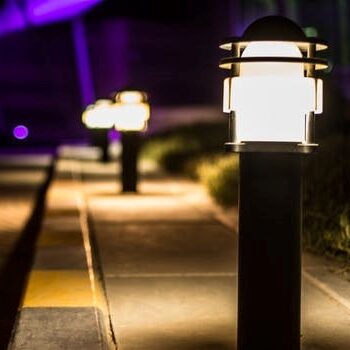
4. Choose lamp type consciously
- The type and quality of light can affect health, wellbeing and productivity.
- For example, we know light temperature and color can have an impact on mood and alertness: cooler, bluer LED lamps often increase perception of brightness enhancing attentiveness.
- Keep in mind the amount and quality of light required, considering the task and the people they are for.
- Color rendering refers to the light’s ability to produce color for the task at hand. Daylight has 100% color rendering ability (i.e. perfect); tasks which require good colors should use lamps with at least an 80%+ color rendering factor.
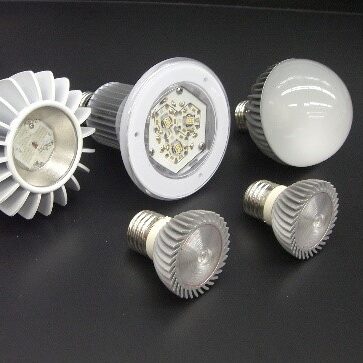
5. Carry out good practice disposal and recycling of old lighting fittings and luminaires
- Responsible waste management has sustainability benefits and can avoid expensive fines for not complying with local environmental laws.
- Look for opportunities to reuse or recycle light fittings.
- It is important to pay attention to what is being disposed of, as sometimes lamps can contain hazardous materials; for example, fluorescent lamps contain mercury. Generally all light fittings use electronics.
- Consult local and state regulations and requirements.

RETHINK
Challenge your mindsets, look for new ways of doing business, trial new ideas, invest in more energy effective lighting technologies; review business cases and ROI

1. Replace older light fitting with more efficient technology ($$)
- Where cost effective, replace older tungsten and fluorescent lamps with LED systems to save between 40 and 80% on lighting energy consumption. LEDs also have a longer life span, lower maintenance costs and other environmental benefits.
- Additionally, ensure choosing the right levels of color (color rendering and color temperature factors).
- Adding inherent dimming control allows setting light levels more accurately, reducing inefficiencies further.
- Talk to project investment teams about what the best approach and opportunities are.
- Use the opportunity to think about lighting procurement policies by standardizing fittings and controls approaches, to help make maintenance, replacements, and driving continual improvements in energy performance easier whilst ensuring good quality levels.
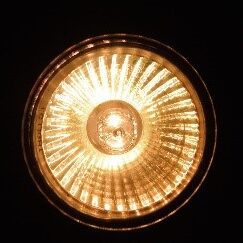
2. Retrofit existing light fittings ($)
- Sometimes it is more practical, or necessary, to upgrade and reuse existing light fittings, for example by replacing older style lamps with LED retrofits and adding reflectors to help spread the light across the room.
- This may be necessary, for example, when there are unacceptably high risk levels of asbestos in ceiling voids to justify replacing light fittings.
- Too high light levels may also allow removal of a proportion of the original lamps or fittings, significantly reducing energy consumption.
- Consider the barriers to installation of new fittings and benefits of retrofitting what’s already there.

3. Upgrade ‘Exit’ and other signs ($)
- Reduce maintenance and achieve greater efficiency by upgrading old exit signs and other signage to more efficient and modern fittings.
- Due to their prevalence and long operating hours, signs often represent a significant, but untapped opportunity for energy saving.
- Sign visibility is a key requirement, so opt for fittings with more diffused light transmission for uniform luminance across the letters.
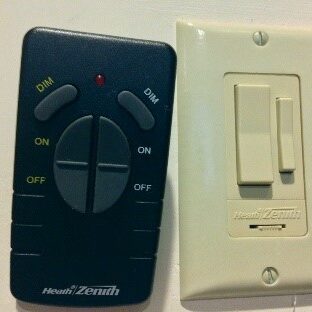
4. Use on-demand lighting controls ($)
- Intermittently used areas, such as corridors, circulation spaces and meeting rooms, can consume significant amounts of energy even though they may not be in constant use – as lighting is generally left on all the time or is controlled using die-back lighting controls.
- Presence detectors (microwave and/or passive infra-red (PIR) sensors) can be used to control the lighting, by switching lights on or turning them up, from setback levels, on-demand (or in near real time) only the time periods that sense the presence of people.
- This approach can significantly reduce the inefficiency of traditional lighting controls, which often work on a dieback principle: where lights are left on for a (often long) fixed time period after someone has walked out of the space.
- In areas with good daylighting, people can switch lights on, only when they need them, for the sensors switch them off again, or dim them down using absence detection, with or without the combination of constant illuminance control.
- On-demand lighting control philosophies often use a minimum safe setback lux-level to dim lights down to when no one is around. In this way, spaces already appear lit to anyone approaching but energy consumption is significantly reduced.
- Trial and continually fine-tune lux levels and time control settings to maximize benefits so the approach works best for you. You will often need to involve builder users and operators to ensure the approach is effective.

5. Engage a support lighting design team for a lighting refurbishment ($$)
- Designers specialize in developing the most effective systems and design solutions for specific requirements.
- A design approach allows you to have the chance to rethink the ways of doing business, and how general and task lighting, daylighting and building orientation can be used to service the kinds of tasks being carried out, for the number and types of people involved.
- For example, there may be an opportunity to use a 12-volt lighting systems if the building is an energy producer, being powered by local renewable energy systems; ; not using a traditional system may significantly reduce many of the energy losses associated with having a mains voltage lighting system for this application.
- Involving a lighting design team during the design and construction phases of a building is the traditional way to go, but you can involve designers at any time to review and help improve the existing layout.
- Ensure any design team facilitates collaboration with existing users and other stakeholders, and that they set up the mechanisms for driving continual improvement in energy and sustainability performance longer-term.
Summary
Look to continually improve your lighting systems and energy performance. New technologies are generally always more efficient and come with guaranteed savings that will repay the initial investment. However, without due consideration of alternative options, the initial investment can sometimes end up being more costly than necessary.
Following the above checklist in the right order will help ensure you minimize lighting investment costs, by right sizing solutions, and maximize energy performance and savings in the most cost effective way possible, in a way that also involves colleagues and other stakeholders.
Keep it simple and think holistically by always considering task and general lighting requirements, types of fittings, efficiency levels, lighting equipment, lighting quality, appearance and total life costs (i.e. initial purchase, installation, maintenance, annual bill, return on investment, etc.). Carefully evaluate all viable measures for comparison, and create your own action plan for continual improvement.
Download
If you would like the downloadable summary checklist of this, please contact us.
- It’s in Microsoft Word, but it can easily be converted to another Word processer, such as Google Docs. It’s read-only, so you’ll have to save your version onto your own drive to be able to modify it.
- You can then modify and develop this simplified checklist to suit your needs as required. Complete it on line or print it out (but remember: think before you print!)
If you're interested in more detail about lighting design and principles check out CIBSE's lighting publications.

Written by Monica Landoni

